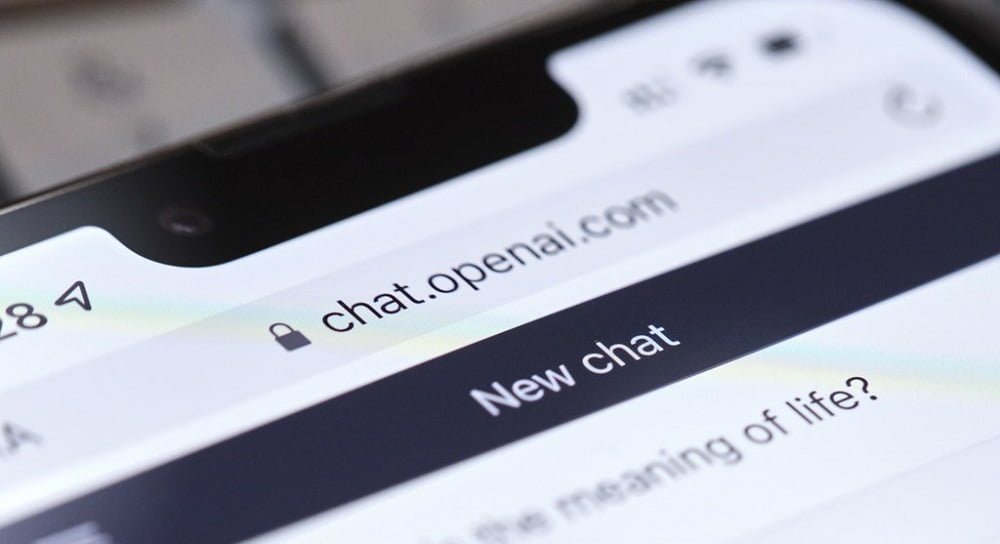Creating your personal AI chatbot no longer demands a tech genius. OpenAI, the mastermind behind ChatGPT, recently introduced a groundbreaking feature: the ability for users to create custom versions of this widely embraced AI chatbot.
Traditionally, building a functional AI chatbot necessitated an advanced knowledge of coding and machine learning, along with access to extensive training data. However, OpenAI’s November 6 announcement signals a paradigm shift. According to the company, “anyone can easily build their own GPT — no coding is required.”
The process is as straightforward as starting a conversation, providing instructions and additional knowledge, and specifying the bot’s capabilities, such as web searching, image creation, or data analysis. The possibilities for the types of chatbots users can create are limitless, according to Hod Lipson, a professor specializing in engineering and data science at Columbia University.
OpenAI envisions a scenario where innovators unleash chatbots tailored to various purposes — humorous, serious, or offering personalized advice. Lipson suggests an example where a renowned chef could develop an AI chatbot reflecting their culinary style and recipes. Fans interacting with this chatbot would experience conversational interactions, creating a lifelike connection with the chef.
In a move akin to an app store, OpenAI plans to facilitate creators in sharing their custom chatbots through the “GPT Store.” This platform will enable verified builders to upload their chatbots, making them accessible to the public for download. Furthermore, over the next few months, creators stand to earn based on their chatbots’ usage, transforming this into a potential marketplace.
“They’re really trying to create a marketplace, which will allow companies and people to innovate and play around with this incredible form of AI that they’ve just unleashed,” remarks Lipson.
However, the power of AI comes with responsibilities. Lipson advises caution, especially for chatbots providing counseling in sensitive areas. Incorrect responses in such scenarios could lead to rapid and severe consequences. Similarly, he urges vigilance for chatbots offering advice in critical domains like medicine or taxation, where incorrect guidance might have real-life implications for users.
Despite potential pitfalls, Lipson encourages individuals to acquaint themselves with AI chatbots. The trajectory suggests that these virtual assistants will only improve with time, presenting an exciting frontier for exploration and innovation.
A Step-by-Step Guide to Creating Your Own AI Chatbot
In the rapidly evolving technology of AI, the demand for intelligent virtual assistants is skyrocketing, and OpenAI’s GPT API stands as a powerful tool for creating your custom chatbot. Let’s find out how to create your conversational AI Chatbot.
Embark on the Journey with OpenAI
Begin your adventure by signing up for OpenAI’s GPT API. Navigate to the OpenAI website, where a seamless enrollment process awaits. Upon completion, secure your API key, a crucial element enabling communication with the GPT models.
Define Purpose and Personality
Every AI chatbot needs a mission. Clearly define the purpose your chatbot will serve, outlining specific tasks and objectives. Additionally, decide on the personality and tone your chatbot will adopt, shaping the nature of its interactions.
Choreograph Conversations
Craft an effective chatbot flow by planning the dialogue. Outline anticipated inputs and corresponding model-generated outputs. By defining how your chatbot responds to various user prompts, you set the stage for coherent and meaningful conversations.
The Art of Training
Training is pivotal. Feed your chatbot a diverse range of example conversations, covering a spectrum of inputs and responses. Utilize the OpenAI GPT API in an iterative process, sending messages and refining responses to enhance your chatbot’s capabilities.
Rigorous Testing and Subsequent Refinement
Test your chatbot thoroughly. Expose it to various inputs to ensure accurate and coherent responses. Based on user interactions, refine and fine-tune capabilities, iterating on responses for continuous improvement.
Unleash Custom GPTs (Optional)
Explore OpenAI’s groundbreaking feature to design custom GPTs tailored to specific tasks. Decide whether to keep your creation private, share it with the world, or deploy it within your organization.
Ensure Privacy and Security
Prioritize privacy and security during development. Implement robust measures to safeguard sensitive information, incorporating encryption protocols and adhering to best practices in user data protection.
Integration with Your Platform
The integration phase is pivotal. Utilize OpenAI’s GPT API library in your preferred programming language to seamlessly embed your chatbot into your website, app, or platform. Configure the API key to facilitate effective communication with the OpenAI GPT models.
The Journey Doesn’t End – Continuous Improvement
Post-launch, monitor user interactions, collect feedback, and identify areas for improvement. Iteratively refine your chatbot’s responses and engage in ongoing training to ensure evolving capabilities align with user expectations.
Creating a private AI chatbot with OpenAI requires careful planning and continuous refinement, and with the innovative tools provided by OpenAI, you have the opportunity to shape the future of intelligent virtual assistants tailored to your specific needs. As technology advances, so too will the potential of your conversational AI Chatbot.

